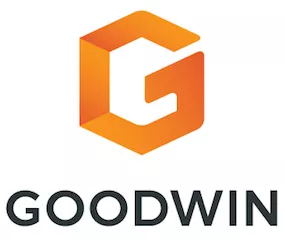- within Food, Drugs, Healthcare and Life Sciences topic(s)
- within Food, Drugs, Healthcare and Life Sciences topic(s)
- within Transport topic(s)
We previously reported on an uptick in the passage of state drug price transparency legislation. What follows is an update to that report. As of April 2025, approximately 23 states had passed drug price transparency laws. In addition, 12 states have created prescription drug affordability boards (PDABs), regulatory bodies that review the affordability and cost of specific prescription drugs. For more information on PDABs, please see our companion alert "Prescription Drug Affordability Review Boards — 2025 Update."
Each state has its own unique set of requirements for transparency laws, but reporting is often completed via an online portal administered by the state's implementing agency. Generally, these laws require manufacturers to report pricing and other information related to the cost, development, and sale of drugs to the state or state-affiliated entities. Some states use this data to produce public reports about the cost of prescription drugs with the goal of creating pricing transparency for drug manufacturers as well as educating the state legislature and public about the drug pricing process.
Recent Legislation and Regulation
To help you navigate this complex and evolving framework, below is an overview of recently passed drug price transparency laws:
- Louisiana: LA. Stat. Ann. § 22:1657.1 requires drug manufacturers to notify the commissioner of insurance if one of their drugs with a WAC1 of $100 or more has undergone a WAC increase of 50% or more for a 30-day supply. Notifications must be made via email.
- New Mexico: NM HB 33 requires drug manufacturers to report
to the state data for any (1) drugs with a WAC of $400 or more for
a 30-day supply, (2) course of treatment that is shorter than 30
days for a brand-name drug that has increased in WAC by 10% or more
in the previous calendar year or by 16% or more over the course of
the previous two calendar years, or (3) a generic drug or
biosimilar that has increased in WAC by 30% or more over the
previous calendar year. In addition, manufacturers must report the
introduction of any new drugs with a WAC that exceeds the Medicare
Part D specialty threshold or biosimilars with a WAC at least 15%
more than the WAC of the brand biologic.
New Mexico's first reporting deadline was extended from May 1, 2025, to June 1, 2025, as the state finalizes its reporting procedures. Reporting requirements are expected to be limited to basic information such as a product's National Drug Code (NDC), its name, and the market date. - New Jersey: NJ S.B. 1615 requires manufactures to report certain data points (e.g., NDC, sales volume, manufacturer costs, reasons for WAC increase) if it is increasing the WAC of a brand-name drug by more than 10% or increasing the WAC of a generic drug priced at $10 or more by more than 10% during any 12-month period. Additionally, the state requires reporting if a new drug has a WAC of $670 per WAC unit or more or a biosimilar has a WAC that is not at least 15% less than the WAC of a referenced brand biologic.
- New York: NY A1707 requires manufacturers to file a notice within 60 days of the planned effective date of an increase in price for prescription drugs with a WAC of more than $40 for a course of therapy if the increase in WAC is more than 16%, including the proposed increase and the cumulative increases that occurred within the prior 24 months.
- Oregon: OAR 836-200-0520 requires that reporting for new drugs introduced on or after Jan. 1, 2025, will use the new threshold of $950 for a 30-day supply, in line with the updated Medicare Part D threshold. Drugs introduced before Jan. 1, 2025, remain subject to OAR 836-200-0505, which uses a $670 threshold.
Several states have also passed legislation to amend or eliminate prior reporting requirements, provide for appeals processes, or establish price transparency oversight boards:
- California: Cal. Code Regs. Title 22 § 96082 provides for the appeals process for any manufacturer that has received notice of an accrued penalty for failure to report a cost increase as required. The manufacturer may file a written appeal within 30 days after the date of the notice of the penalty.
- Connecticut: HB 6669 updates the WAC increases that must be reported from a 20% WAC increase during the immediately preceding calendar year to a 16% cumulative increase during the preceding two calendar years for drugs that cost $40 or more for a course of treatment.
- Maine: S.P. 996 now requires manufacturers of insulin to notify the Maine Health Data Organization of the WAC per pricing unit for insulin produced by the manufacturer in each category of insulin.
- Minnesota:
- S.F. 2995 amends the state's Prescription Drug Price Transparency Act to include some technical fixes and clarifications, such as explicitly including "biosimilars" along with generic drugs in the provision that triggers reporting when there is a WAC increase of at least 50% over the previous 12 months. The amendments also clarify that "course of treatment" means "the maximum recommended dosage on the FDA-approved prescribing label" if the label includes more than one recommended dosage for a single course of treatment.
- S.F. 2744 expands Minnesota's existing drug pricing activities to establish two mechanisms intended to curb rising drug costs: (1) a prohibition on generic-drug manufacturers taking price increases above a specific threshold and (2) a Prescription Drug Affordability Board to identify, review, and establish an upper payment limit on certain high-cost drug products sold in the state.
- Texas: Tex. Health & Safety Code § 441.0051-441.0054 expands existing state reporting requirements. Manufacturers must now report all prescription drugs with a WAC of $100 or more for a 30-day supply that have undergone a WAC increase of 15% or more in the previous year or 40% or more over the past three years. If any FDA-approved drugs are sold in Texas, the manufacturer must also submit a report with the current WAC information to the Texas Health and Human Services Commission. Penalties for noncompliance may be up to $1,000 per day from the date on which such reporting is required, after 45 days from the date the manufacturer receives notice.
- New York: S.B. 7506B ch. 6 Part XX in April 2023 directed the Department of Health to remove ("carve out") Medicaid pharmacy benefits from the managed-care benefit package and provide those benefits under the fee-for-service program to promote transparency and efficiency of services. In addition, it empowered the superintendent of insurance to investigate insurers, drug manufacturers, and pharmacy benefit managers for prescription drug price increases of more than 50% over a 12-month period. The superintendent is required to provide investigative findings to the newly created drug accountability board, which is authorized in certain instances to evaluate and report to the superintendent on (among other things) a drug's impact on premium costs, affordability, and price compared to therapeutic benefit.
- North Dakota: HB1584 repealed North Dakota's drug price transparency program and simultaneously created a PBM licensure requirement in the state. The now-repealed drug price transparency program was initially created in 2021 by HB1032. It required manufacturers to report to the state drug price increases exceeding certain thresholds for all drugs with a WAC greater than $70 on a quarterly basis.
- Florida: Florida regulators recently clarified that the state's expectation for the price increase three-year lookback period is the most recent 36 months, rather than the three previous calendar years indicated in its statute.2
During some recent legislative sessions in Illinois, Massachusetts, Michigan, Minnesota, and Oklahoma, proposed price transparency legislation has stalled. As states open new legislative sessions, we will monitor price transparency legislation, particularly in jurisdictions that have previously contemplated adopting price transparency laws.
Enforcement
Enforcement of state reporting laws is beginning to take shape as states pass legislation and implement administrative guidance, the majority of which provide for civil or administrative penalties. Enforcement authorities typically assess fines for each day a manufacturer is in violation and may increase penalties the longer the violation persists. Additionally, the appeals process for any enforcement action typically follows either a prescribed process codified by the state law or defaults to the appeals process under the state's administrative procedure act.
Entities that fail to comply with these requirements may face substantial penalties of up to $25,000 per violation in most states. In 2024, Oregon issued $75,000 in civil penalties for noncompliance with reporting requirements.3 From 2019 to 2021, California fined 49 manufacturers more than $72.1 million for failing to report price increases, although much of this sum was appealed and reduced by settlement or decision. Other states have opted for a lighter enforcement touch. For example, in 2024, Texas issued 33 notice of violation letters for reporting noncompliance but only $5,700 in cumulative fines to 19 manufacturers.4
Notably, Washington state has begun enforcing its law by issuing notices of violation and fines for failing to report the introduction of a "new covered drug" within 30 days of market entry. Fines in Washington state accumulate per day based on a determination about the company's level of culpability.
We will provide further updates on these and other drug pricing transparency measures as additional information becomes available.
For a more in-depth analysis of these and other drug pricing transparency laws, please see our publication "State Drug Transparency Laws: Considerations for Pharmaceutical Manufacturers" in Chapter 8 of the American Health Law Association's 2021 edition of Health Law Watch.
Footnotes
1. Wholesale acquisition cost, or WAC, is a drug manufacturer's list price when sold to a drug wholesaler or other direct purchaser, exclusive of any discounts or rebates.
2. Fla. Stat. § 499.026 (2025), which requires drug manufacturers to report any WAC increase of 15% or more during the previous 12-month period or any cumulative WAC increase of 30% or more during the preceding calendar years.
3. Oregon Dep't of Consumer and Business Services, Prescription Drug Price Transparency Program Results and Recommendations 9 (2024).
4. Texas Department of Health and Human Services, Compliance Actions – Prescription Drug Price Disclosure Program, Current Disciplinary Actions, 1-4.
The content of this article is intended to provide a general guide to the subject matter. Specialist advice should be sought about your specific circumstances.




